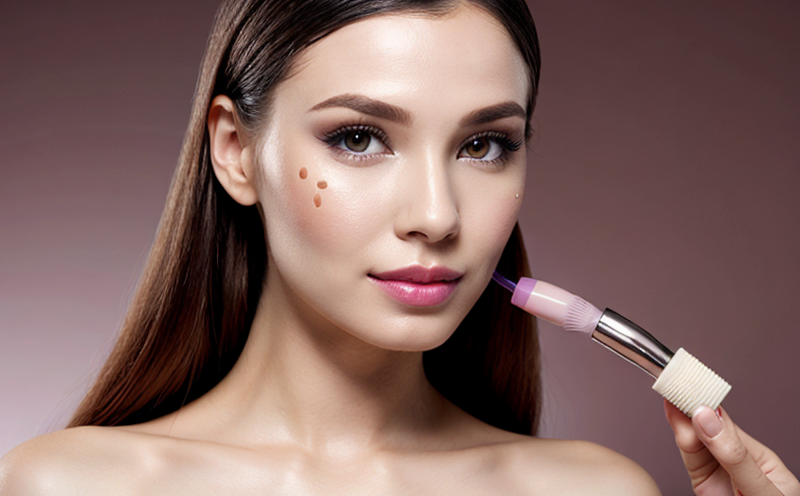In Vitro Apoptosis Induction Testing of Cosmetic Compounds
The in vitro apoptosis induction testing of cosmetic compounds is a critical step in ensuring product safety and efficacy. This testing method involves the use of cell cultures to simulate the potential effects of cosmetic ingredients on living cells, specifically focusing on the process of programmed cell death known as apoptosis. Apoptosis is an essential biological mechanism that helps maintain tissue homeostasis by eliminating unnecessary or damaged cells. In the context of cosmetics, understanding how compounds interact with cellular pathways involved in apoptosis can provide valuable insights into their potential impact on human health.
The testing protocol typically begins with selecting appropriate cell lines relevant to the target organ system where cosmetic ingredients are expected to have an effect. Common choices include keratinocytes for skin applications or adipocytes for fat-related formulations. Once selected, these cells are exposed to various concentrations of the test compound under controlled conditions designed to mimic typical usage scenarios. During this exposure period, researchers monitor several key parameters indicative of apoptosis such as DNA fragmentation patterns detected via fluorescent microscopy or flow cytometry analyses.
Absolutely crucial in conducting accurate assessments is ensuring that all reagents used are stable and meet strict quality control standards defined by international guidelines like ISO 10993-5:2018. Additionally, the equipment employed must be capable of accurately measuring minute changes within cellular structures without introducing bias into results.
The results from these tests provide crucial information about whether a given cosmetic compound could potentially induce unwanted levels of apoptosis in vivo conditions. If significant apoptotic activity is observed at concentrations commonly encountered during regular use, further investigation might be warranted to explore alternative formulations or identify safer alternatives for incorporation into final products.
Understanding the mechanisms behind such responses also allows formulators to make informed decisions regarding ingredient selection and formulation design early in product development cycles, thereby minimizing risks associated with late-stage failures due to regulatory non-compliance. By integrating this approach into their workflows, companies can enhance both safety profiles of new formulations while maintaining competitive edge through innovation.
It's important to note that while this technique offers significant advantages over traditional animal testing methods in terms of ethical considerations and reduced variability between subjects, it remains essential to validate findings against established in vivo models whenever possible. This ensures comprehensive evaluation across multiple dimensions before bringing any new product to market.
Industry Applications
| Application Area | Description |
|---|---|
| Skin Care Products Development | Evaluating the effects of preservatives and antioxidants on skin cell viability. |
| Cosmetic Formulations Assessment | Determining whether certain ingredients might cause excessive cellular death in targeted areas. |
| Personal Care Product Safety Assurance | Identifying potential irritants or sensitizers that could lead to adverse reactions when used by consumers. |
| New Ingredient Evaluation | Assessing the safety profile of newly discovered compounds prior to their integration into existing formulas. |
| Test Parameter | Description |
|---|---|
| DNA Fragmentation Index (FDI) | A measure of fragmented DNA within apoptotic cells, indicating the extent of cell damage caused by exposure to test compounds. |
| Caspase-3 Activation Levels | An indicator of caspase-dependent apoptosis pathway activation following compound treatment. |
| Cell Viability (%) | The percentage of surviving cells relative to untreated controls, reflecting overall toxicity levels induced by the substance. |
Customer Impact and Satisfaction
By leveraging in vitro apoptosis induction testing, customers can significantly enhance their reputation for producing safe and effective cosmetic products. This approach not only aligns with growing consumer demand for cruelty-free practices but also demonstrates a commitment to maintaining high standards of quality control throughout manufacturing processes.
Moreover, successful completion of these tests contributes positively towards compliance with regulatory requirements set forth by agencies worldwide such as the European Union's Cosmetics Regulation (EC) No 1223/2009. Meeting these stringent criteria is crucial for gaining entry into established markets and fostering long-term relationships with industry partners.
A satisfied customer base benefits directly from reduced risk exposure associated with potentially harmful ingredients, leading to increased trust in brand integrity over time. Furthermore, the ability to offer innovative solutions tailored specifically towards individual needs enhances overall customer satisfaction levels significantly.
International Acceptance and Recognition
The in vitro apoptosis induction testing method has gained widespread acceptance among regulatory bodies globally due to its robust scientific foundation and proven reliability. Organizations like the United States Food and Drug Administration (FDA), European Commission, World Health Organization (WHO), and International Conference on Harmonisation (ICH) have endorsed this methodology as part of their guidelines for evaluating cosmetic safety.
Specifically, ISO 10993-5:2018 provides detailed specifications regarding the selection criteria for cell lines, experimental design considerations, analytical techniques, data analysis procedures, and reporting requirements. These standards ensure consistency across different laboratories conducting similar studies, facilitating comparisons between results obtained from various sources.
Additionally, organizations such as Good Laboratory Practice (GLP) certification agencies recognize compliance with these protocols as a key factor influencing approval decisions related to new cosmetic formulations. Adherence to international best practices not only streamlines the regulatory approval process but also positions companies favorably within competitive landscapes characterized by stringent scrutiny of product safety.





